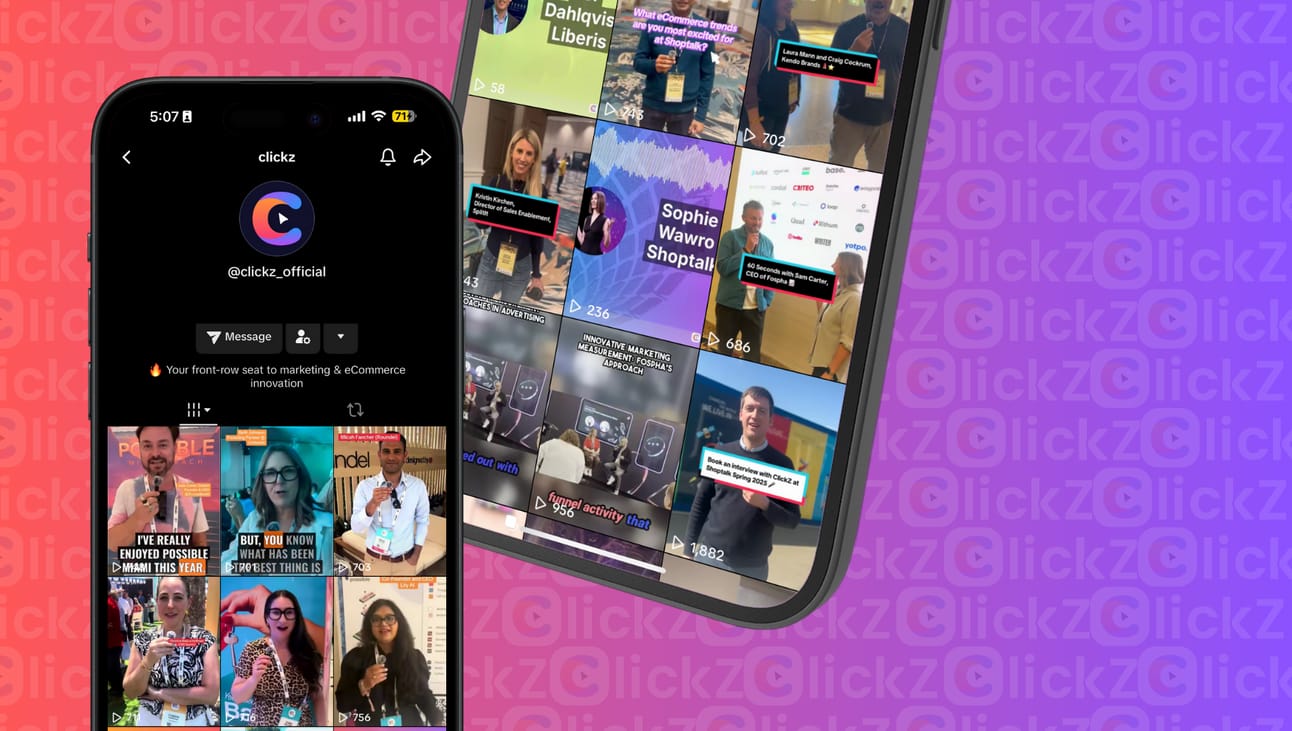In a packed MADFest session that veered from behavioral science to branded socks, Rory Sutherland did what he does best: challenge everything marketers think they know about decision-making, technology, and value.
Hosted by Robin Marchant, Klaviyo’s Senior Director of Marketing, the conversation centered around a provocative question: What if marketing’s real power isn’t about driving efficiency but understanding humans better than anyone else in the business?
More Channels, More Choices, More Confusion
The session began with a clear challenge: consumers now switch between an average of three to five channels before buying and they don’t follow any predictable path. Klaviyo’s own research confirms this: fragmented journeys are the norm.
But as Sutherland pointed out, the industry's response often leans in the wrong direction. “There’s this obsession with driving everyone through the most efficient channel,” he said. “But brands don’t grow by being more efficient. They grow by being available, wherever, and however, the buyer prefers.”
Drawing on Byron Sharp’s availability theory, Sutherland made the case that multi-channel presence isn’t just a nice-to-have. It’s fundamental. Brands trying to force customers down pre-defined paths, often designed by finance or procurement, risk leaving money on the table. “Cost savings are easy to measure. Lost sales are not. And that’s why the most damaging marketing decisions often look good in a spreadsheet.”
Automation Shouldn’t Erase Optionality
Sutherland, never one to hold back, pointed to what he sees as a creeping danger in how technology is implemented. “A lot of tech arrives as an option… and then ends up as an obligation,” he warned. His example? The parking app.
“It started out as a handy alternative. Now it’s often the only way to pay. My father, in his late 80s, basically couldn’t park anywhere.”
The broader point was clear: when efficiency is mistaken for progress, customer experience suffers. Removing friction can be good but removing choice can backfire. “It’s okay to do more than one thing,” Sutherland said. “Marketers get that. Procurement often doesn’t.”
The Case for Generosity (and the Power of Socks)
Perhaps the most unexpected idea of the session was the one with the longest tail: generosity. “One of the most under-explored tools in marketing is being disproportionately generous to your customers,” Sutherland argued.
He gave the example of sending small, thoughtful gifts, no minimum spend, no catch. The effect, he said, wasn’t just about driving the next sale. It was about changing the emotional relationship between brand and buyer. And when done right, that emotional lift can generate loyalty, repeat purchases, and word-of-mouth far beyond what short-term metrics show. “If you want to prove this in a spreadsheet, you’ll struggle. But if you want to build a brand people care about, it works.”
The Explore–Exploit Trade-Off
One of the most powerful moments in the session came when Sutherland described what’s wrong with how marketing gets measured today. “You’re being judged by thin-tail math,” he said, “when marketing is a fat-tail discipline.”
In other words, great marketing doesn’t deliver predictable, linear gains. It delivers breakthroughs, big outcomes that come from trying something new, not optimizing something old. But because those breakthroughs are rare and hard to model, they often get dismissed or underfunded.
To explain the dynamic, Sutherland referenced the explore vs. exploit trade-off from systems theory (and bees). Performance marketing is the bee exploiting known pollen. Brand marketing is the bee flying off in search of something new. Without both, the hive dies. “Marketing should be treated as a branch of R&D,” he argued. “But we fund it like it’s a procurement function.”
Why the Best Brands Think Long-Term
Perhaps the most pointed critique was reserved for corporate structure itself. “A disproportionate number of the best brands,” Sutherland noted, “come from family-owned businesses.” From Specsavers to McCain, he pointed out that these brands tend to play a longer game, take more creative risks, and care more about relationships than quarterly returns.
It’s not because family ownership guarantees brilliance. It’s because they aren’t trapped by finance-led definitions of value. They’re allowed to try things, send gifts, tell better stories, build emotional resonance, without having to prove ROI by next quarter.
That same principle, Marchant noted, underpins how Klaviyo thinks about customer engagement. “It’s about creating real value and trust over time, not just one-time performance.”
Try, Don’t Just Model
The session closed with a final reminder that will resonate with anyone trying to navigate a data-driven business culture: “There’s no data to support doing something new,” Sutherland said. “Because it’s new.”
He invoked Jeff Bezos’ “two-way door” theory, where most decisions in business are reversible, so they’re worth testing. “It’s cheaper to try than to argue,” he said. “And the upside, if you’re right, can be massive.”
Editor’s Note
Sutherland’s critique of short-term thinking and efficiency-led decision-making reflects a measurement gap most brands are still navigating. Fospha closes that gap, delivering privacy-safe, full-funnel measurement that moves beyond last-click and quantifies the true impact of brand investment, including halo effects and long-term revenue growth.
In its latest Glow report, Fospha shows how brands like Sweaty Betty and Lounge Underwear are turning early signals, like branded search and engaged visits, into clear, commercial outcomes.
💡 Don’t Forget…
Add us to contacts
→ [email protected] (so we don’t land in spam during the show)
Follow us live

That’s your 24-hour head start.
Keep this guide handy, make your picks, and book your meetings early — the most valuable conversations won’t wait. See you in Shoreditch.
— The Unofficially MAD//Fest Team

Unofficially MAD//Fest is a ClickZ Media publication in the Events division

